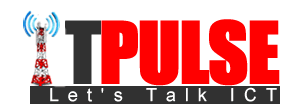The rapid adoption of Artificial Intelligence (AI) in the business sector, while boosting efficiency, has introduced a significant risk: employees using unauthorized AI tools. Data from Stocklytics.com reveals that half of all professionals have used unapproved AI tools at work, directly exposing sensitive company data to potential breaches.
AI has transitioned from an experimental technology to a fundamental part of business operations across diverse industries. As of 2025, 56% of companies have already integrated AI, with an additional 32% just beginning their AI journey. While the benefits of AI in automating tasks like data analysis, customer service, and content creation are clear, the security implications of employee behavior are becoming a major concern.
According to the 2025 Technology Perceptions Survey Report by INTAPP, a substantial 72% of professionals currently use AI tools at work, marking a significant 24% increase in just one year. The most common applications include data summarization and document generation, each accounting for over 40% of use cases among respondents.
Despite widespread company adoption, a worrying trend has emerged. The survey indicates that half of all professionals are risking company data by utilizing unauthorized AI tools. These tools, often unvetted and not compliant with privacy regulations, can inadvertently expose confidential information to third parties.
The statistics concerning unauthorized AI tool usage are particularly concerning:
- 24% of surveyed employees have used unauthorized AI tools multiple times.
- Another 26% have used them once or twice.
- Even more troubling, 23% of employees who haven’t yet used unauthorized tools stated they would if given the opportunity.
Shockingly, only one in four employees reported they would never use such tools, highlighting a widespread willingness among professionals to bypass approved channels.
The use of unauthorized AI tools can lead to serious consequences, including data leaks, malware infections, and unapproved information sharing, all of which can severely harm both the company and its clients. This threat is projected to escalate as the number of AI tool users continues to surge.
According to Statista, approximately 350 million people globally are using AI tools in 2025, a threefold increase in just five years. This number is expected to surpass half a billion by 2027 and reach a staggering 1.1 billion by 2031. As AI becomes even more ubiquitous, the challenge of managing and securing its use within organizations will become increasingly critical.




